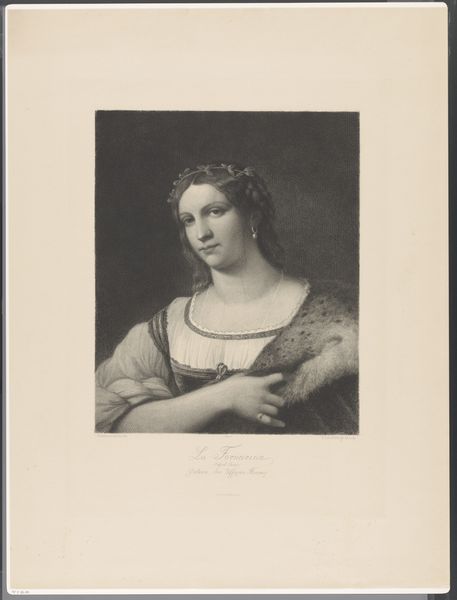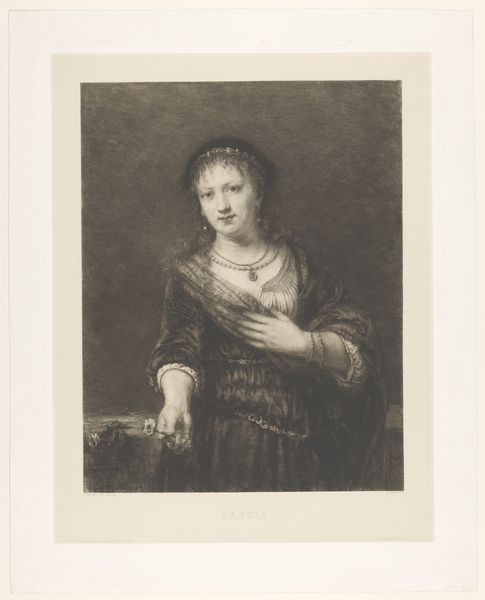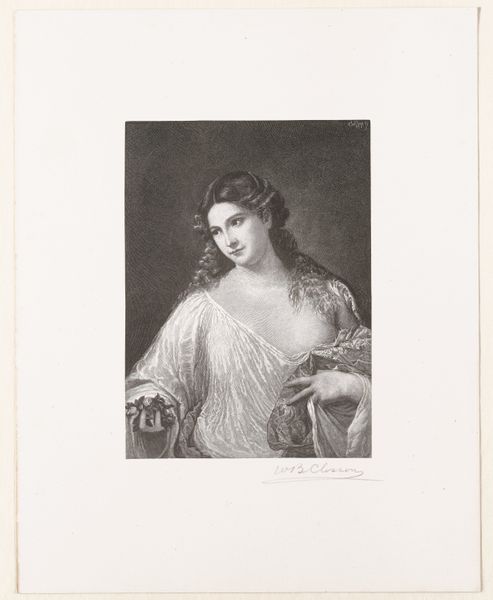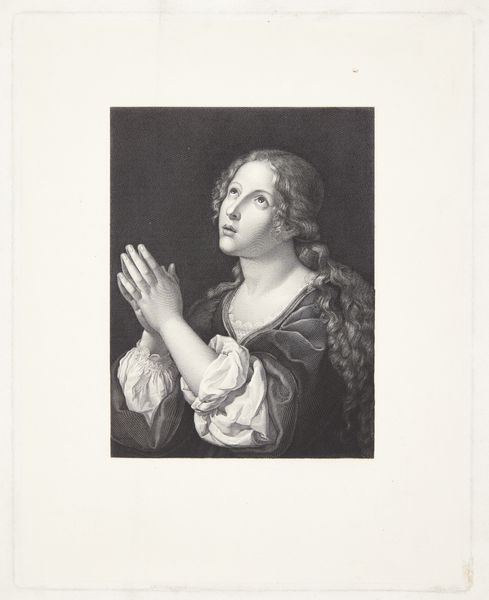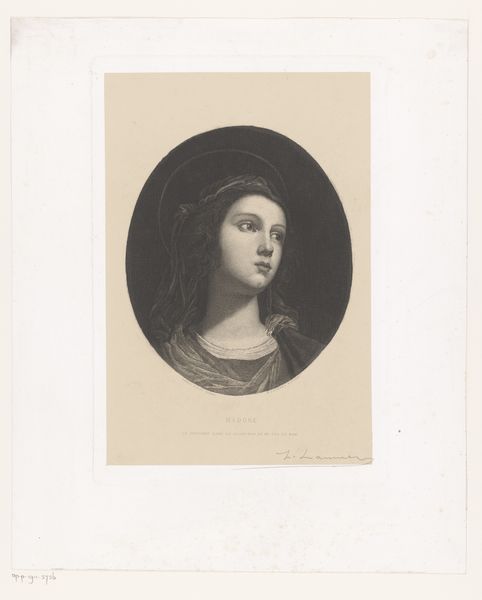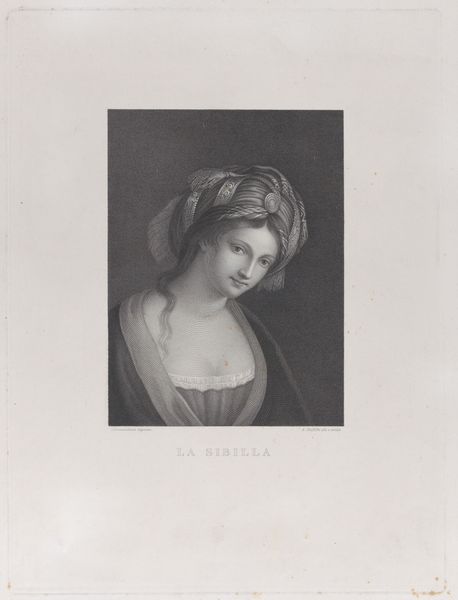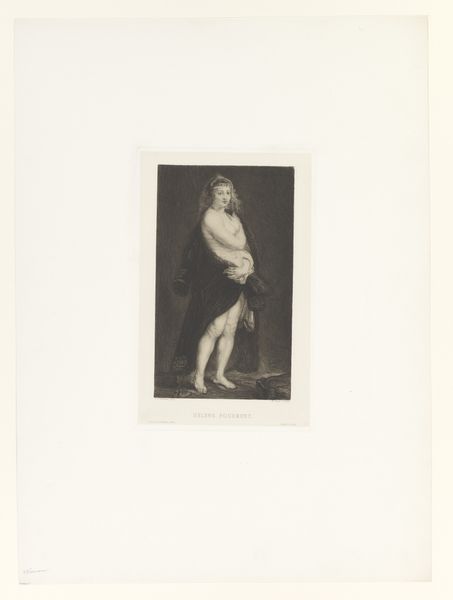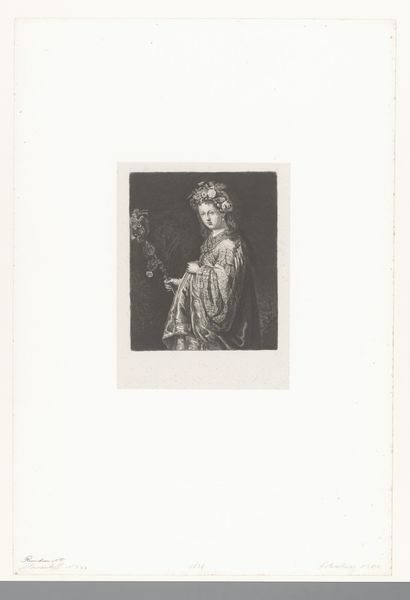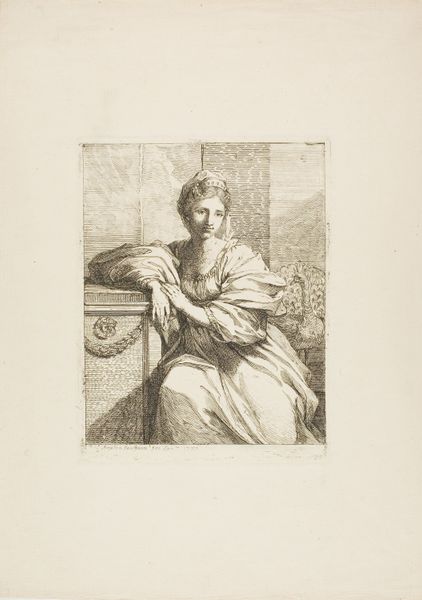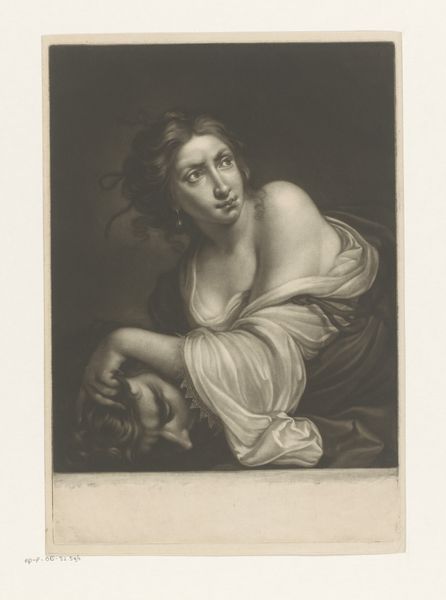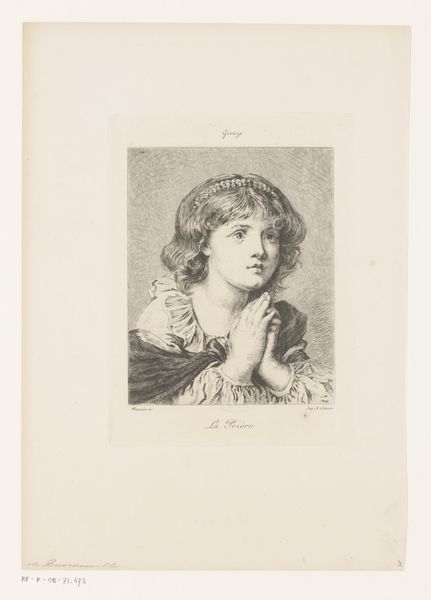
print, engraving
#
portrait
#
high-renaissance
# print
#
figuration
#
italian-renaissance
#
engraving
Dimensions: height 495 mm, width 400 mm
Copyright: Rijks Museum: Open Domain
Editor: Here we have "La Fornarina" by Rudolf Stang, dated between 1841 and 1927, rendered as an engraving. It feels like a classical painting translated into print. What aspects of its historical context particularly stand out to you? Curator: Well, this print references the original painting by Raphael, and its existence raises some interesting questions about artistic reproduction and accessibility in the 19th and early 20th centuries. Think about it: how did reproductions like this shape public perception and understanding of Renaissance masterpieces, making them available to a wider audience who might never see the original? Editor: So it's less about the subject and more about how the image circulated? Curator: Exactly. It's about the democratization of art. But it's also about power dynamics. Who decided which images were worthy of reproduction? And how might the choices and biases of those making these reproductions influence the taste and knowledge of the public? Notice, for instance, how this print emphasizes certain aspects of the original while perhaps losing some of the nuances of Raphael's painting. Editor: That makes a lot of sense. So the medium itself influences the message? Curator: Precisely. This print not only disseminates an image, but also reinterprets and reshapes its cultural meaning in a new era. Consider also, the societal role and representation of women: did the reproduction reinforce certain ideals, or challenge them? How might a female audience in the 19th century view the work differently? Editor: That gives me a lot to consider. It's fascinating how a seemingly simple reproduction can open up so many questions about society and culture. Curator: Indeed. Looking at art through the lens of its history of production and reception unveils its complex relationship to power, access, and cultural values. There is more to it than simply seeing it, but how and why was it seen in that context?
Comments
No comments
Be the first to comment and join the conversation on the ultimate creative platform.
